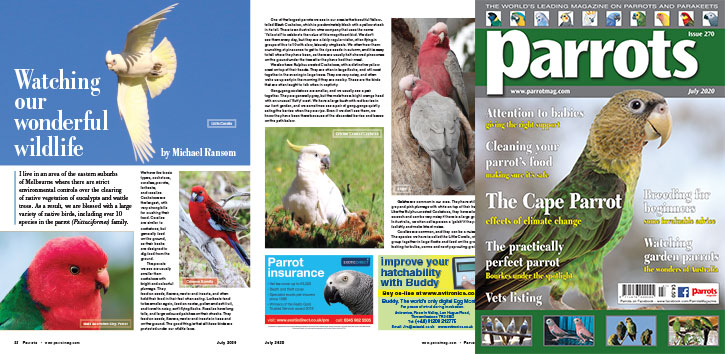
By Michael Ransom
I live in an area of the eastern suburbs of Melbourne where there are strict environmental controls over the clearing of native vegetation of eucalypts and wattle trees. As a result, we are blessed with a large variety of native birds, including over 10 species in the parrot (Psittaciformes) family.
We have five basic types, cockatoos, corellas, parrots, lorikeets, and rosellas. Cockatoos are the largest, with very strong bills for crushing their food. Corellas are similar to cockatoos, but generally feed on the ground, as their beaks are designed to dig food from the ground.
The parrots we see are usually smaller than cockatoos with bright and colourful plumage. They feed on seeds, flowers, nectar and insects, and often hold their food in their feet when eating. Lorikeets tend to be smaller again, feed on nectar, pollen and soft fruit, and travel in noisy, swift flying flocks. Rosellas have long tails, and large coloured patches on their cheeks. They feed on seeds, flowers, nectar and insects in trees and on the ground. The good thing is that all these birds are protected under our wildlife laws.

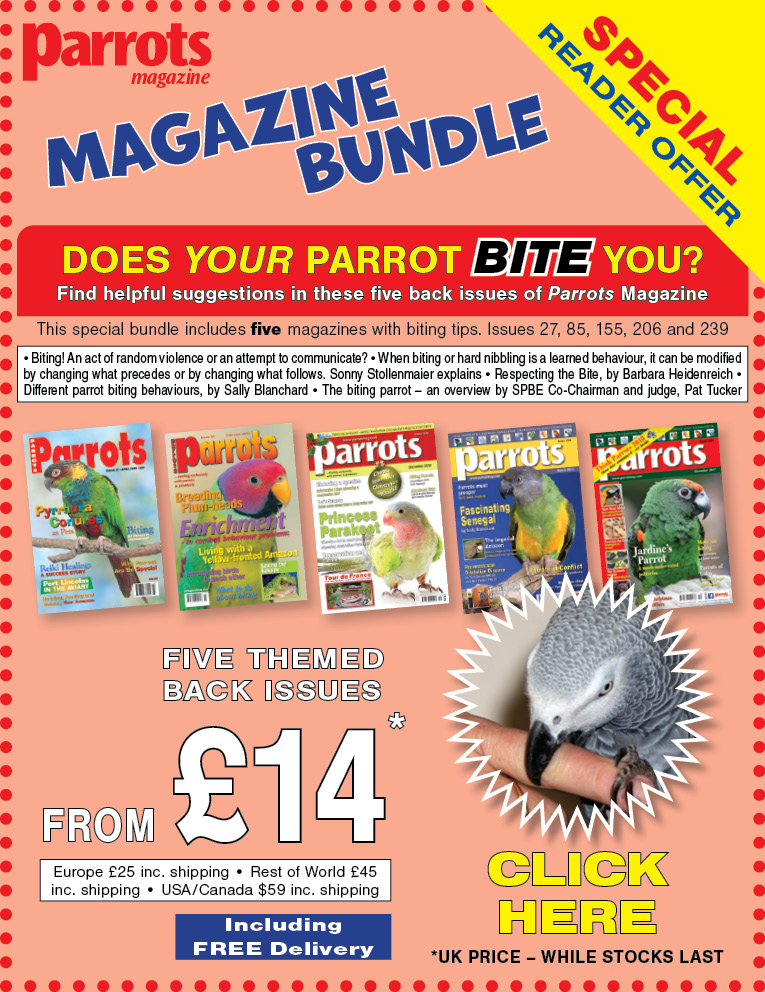
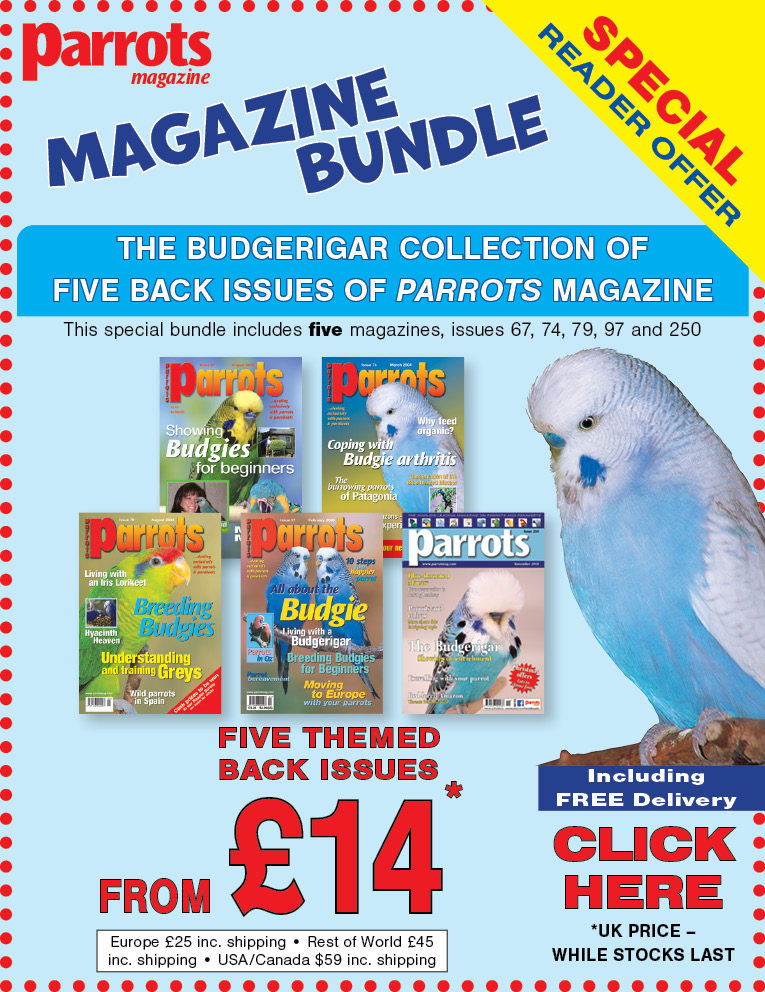
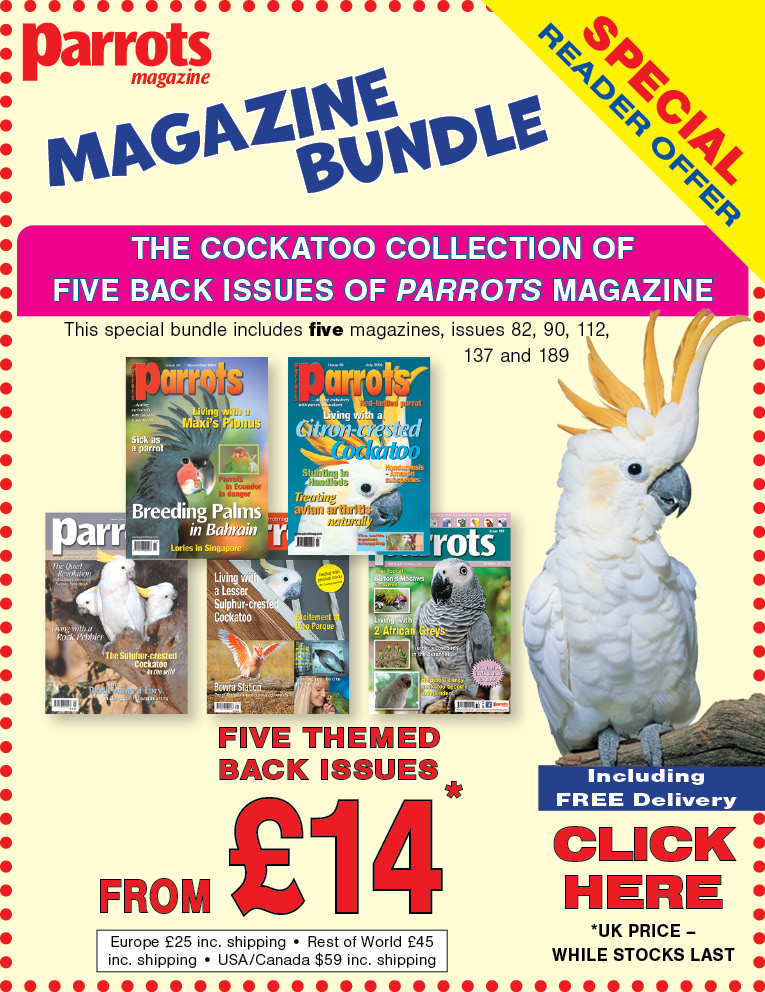
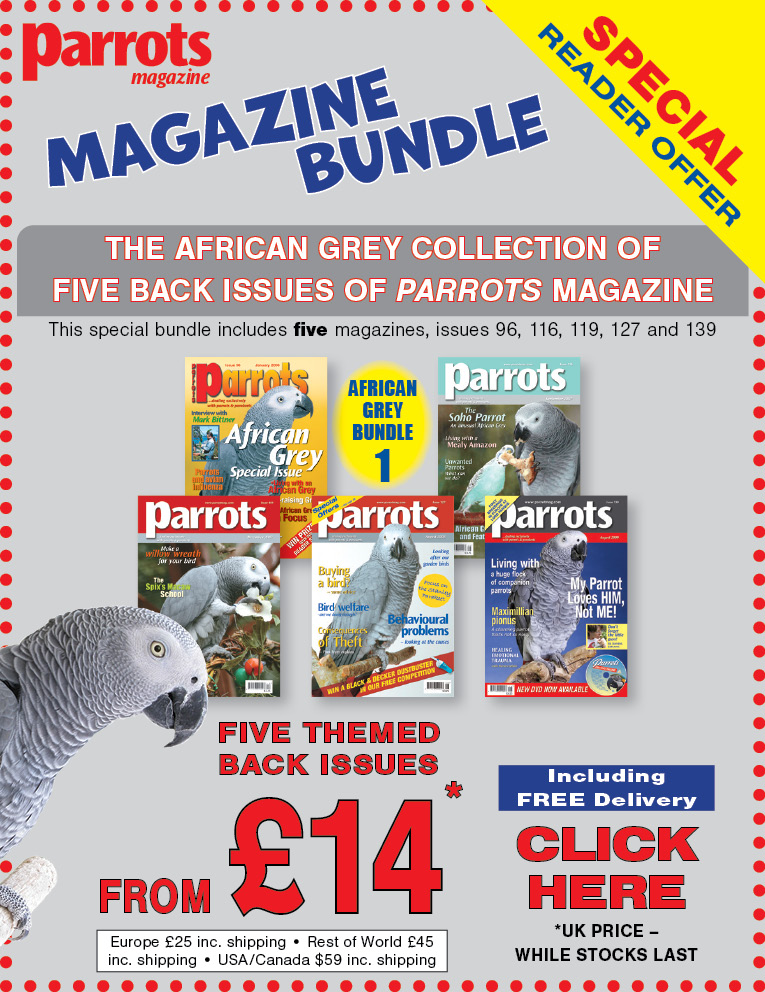

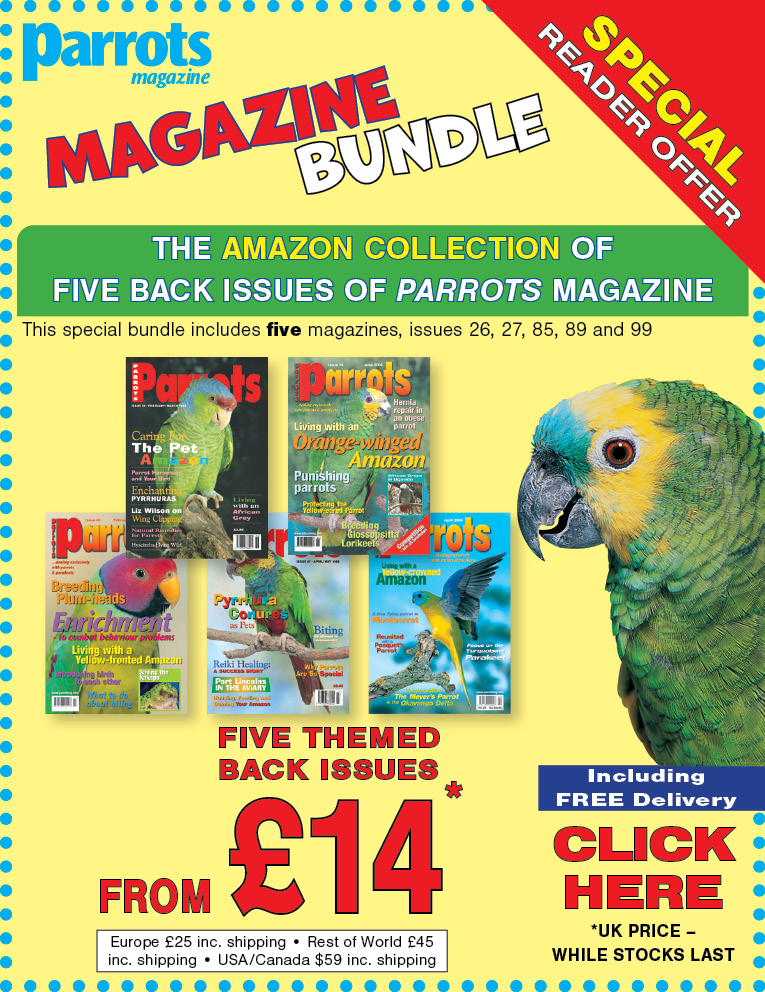

Parrot Chat
Buyers Guides
Breeding articles